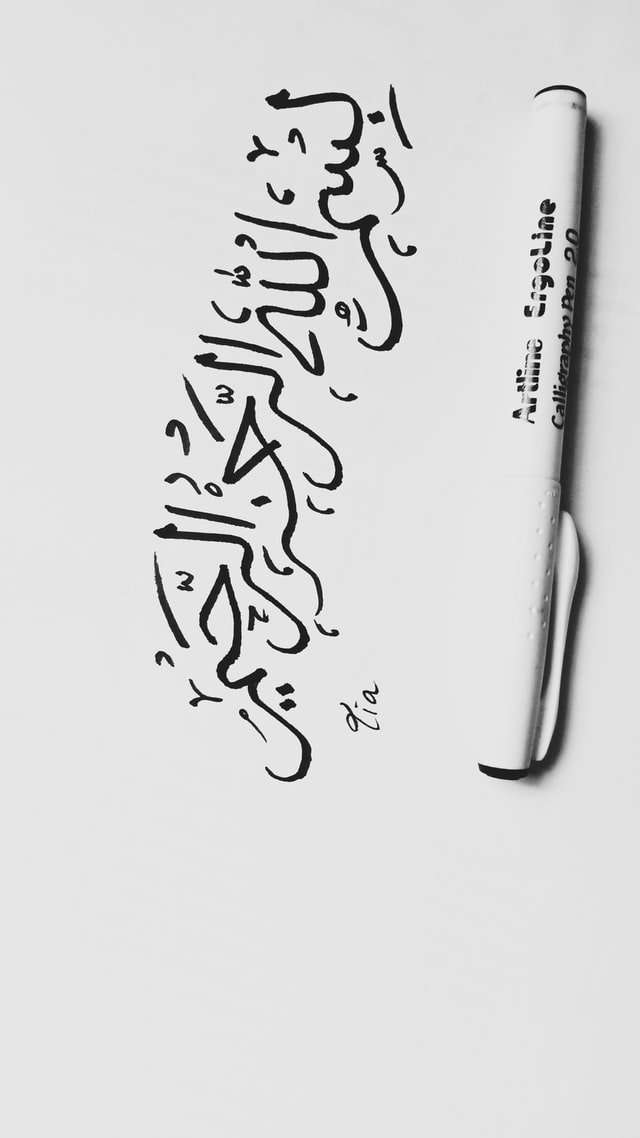I’m not an artist by any means, so I was hesitant to try out minimalism. But as a lover of art I found it very intriguing.
I spent about a month on and off researching the style and trying to understand it. I read several pieces on how to create minimalist art of my own, and tried creating a few pieces of my own. I quickly realized that more than anything, minimalist art requires you to embrace simplicity. Minimalism is the art of simplicity and nothing can be more simple than the creation of your own minimalist pieces!
Artists often create minimalist art, because it is a way for them to make use of their artistic talent without sacrificing simplicity. They can create beautiful pieces by focusing on one color, or one line, or one part of something.
In order to create your own minimalist pieces you need to be able to draw very well. There are some people who can just randomly scribble and end up with a wonderful minimalist piece. But those people are rare and often have had a lot of practice at drawing over time. In order to create your own minimalist pieces you will need to dedicate yourself to practicing your drawing skills so that you can eventually produce something that is truly lovely and minimal.
Another thing you will want to do is get the right supplies. You might not want to buy everything at once, but be sure that the supplies that you do buy are high quality. This is important because you should not just be looking for beautiful minimalist pieces when you draw or paint, you should also be looking for durable pieces that will stand the test of time for many years in the future. You will also find that if the supplies you have chosen are high quality, your drawings and paintings will turn out much better than if you use low quality materials.*
There are several different kinds of minimalist art. There is the space-age, clean cut look of the 60s. There is the simple lines of Mondrian. Then there are the geometric patterns and solids of Kandinsky and Bridget Riley.
Trying to decide on a style for yourself can be difficult, but it is actually quite easy if you just try to copy the style of your favorite artist. When you are trying to create minimalist art, you need to focus more on your subject than anything else.
When creating your own minimalist piece, you need to focus more on what you want to say than how you want to say it. It is better to create an interesting picture that has a few things missing than an interesting picture that has nothing left out.
In order to make your piece minimalist, you need to focus more on what is important in your picture than what isn’t there.
When creating a piece of minimalist art, you need to focus more on what makes it unique than on what makes it popular.
To create your own minimalist pieces, try focusing more on which parts belong in the picture and which parts don’t belong in the picture. Putting too much detail into one part of your work can take away from other aspects of it that may
The question, “What is minimalist art?” is one that many ask. The answer is not an easy one. There are many different ways to describe this style of art. In general minimalist art is made up of geometric shapes and simple colors.
One of the first questions that may come to your mind when you look at a piece of minimalist art is, “Why would someone create something like this?” It may seem strange and even boring at first glance, but when you look closer, it’s really quite unique.
The artist chooses just a few colors and simple geometric shapes in order to allow the viewer to focus on the subject matter. This type of artwork was inspired by Zen Buddhism and the simplicity of life. The main idea in Zen Buddhism is that there are no distractions from everyday life; this concept led to the creation of minimalist art. By simplifying a painting, you are able to get right down to what matters most without any unnecessary details separating you from your thoughts or feelings.
Minimalist art has no distractions so it allows you to focus on what matters most. It brings an element of peace into your life while adding beauty to your surroundings! If you wish to try and create some minimalistic artwork yourself, here are some tips below:
– Choose
The minimalist art pieces are a direct reflection of the simplicity of their creators. When the world was over-flowing with things, the artists decided to remove all unnecessary things and focus on the most important ones.
Minimalism is about stripping away everything that is not necessary for a better understanding of what really matters. The outcome is a perfect balance between form and structure.
The artists used the empty spaces to create an impact that would have been impossible to achieve with normal objects.
In addition to these benefits, minimalism can be easy to replicate in your own home as well as affordable. Although there are many ways you can create beautiful minimalist art pieces, we will look at three of them here:
1) Clutter-free room
2) Empty space
3) Use of geometry in art
Minimalist art is a great way to make a statement. The more minimalistic your artwork is, the more of an impression it leaves on the viewer. Minimalism is about leaving out unnecessary details and focusing on the main idea.
The term minimalist art generally refers to art that is simple or limited in its subject matter, use of color and formal elements such as line, shape, texture and composition. This type of art was first used by Russian artist Kasimir Malevich during World War I in 1915.
Artworks that are considered minimalist are often abstract paintings where the subject is simplified into geometric shapes and structures using only a few colors. The goal of this style of art is to allow the viewer to interpret emotions from the different shapes and lines rather than relying on color for emotion.*
Minimalism has recently become quite popular with graphic artists who are aiming for simplicity in design. Minimalist designs tend to favor typography over illustrations as well as white space over dense information. It’s also not uncommon for minimalist designs to feature large areas of solid color instead of images.*
“Minimalist art” is a contradiction in terms. What makes art minimalist is not how much it’s been simplified, but how much it’s been removed. Simplicity isn’t the goal of minimalist art; emptiness is.
As you may have noticed, we tend to like our art to be full of things. Monumental paintings, ornate sculptures, epic poems, grandiose operas, enormous cathedrals–we admire these not for their emptiness but for the way they are filled up. The more stuff an artwork has, the more we like it. We admire it for its density: density of color and texture and meaning.
Minimalism doesn’t mean taking something big and making it small; it means taking something big and removing everything from it but its essence. The essence of minimalism is emptiness.
The genius of minimalism lies in the way that this emptiness allows us to see clearly. Art with a lot going on in it can be hard to look at; all those details distract us from what the artist wants us to see: a face or a landscape or some other thing that’s been made to seem as if, paradoxically, it really isn’t there at all. But when you remove all distractions you are left with only


